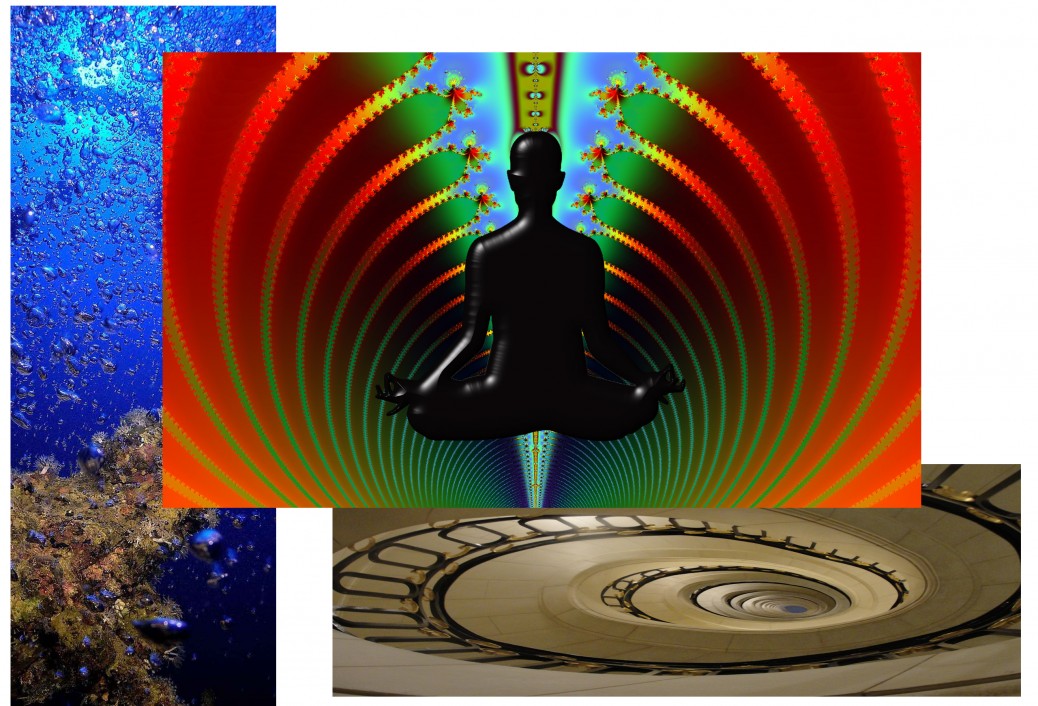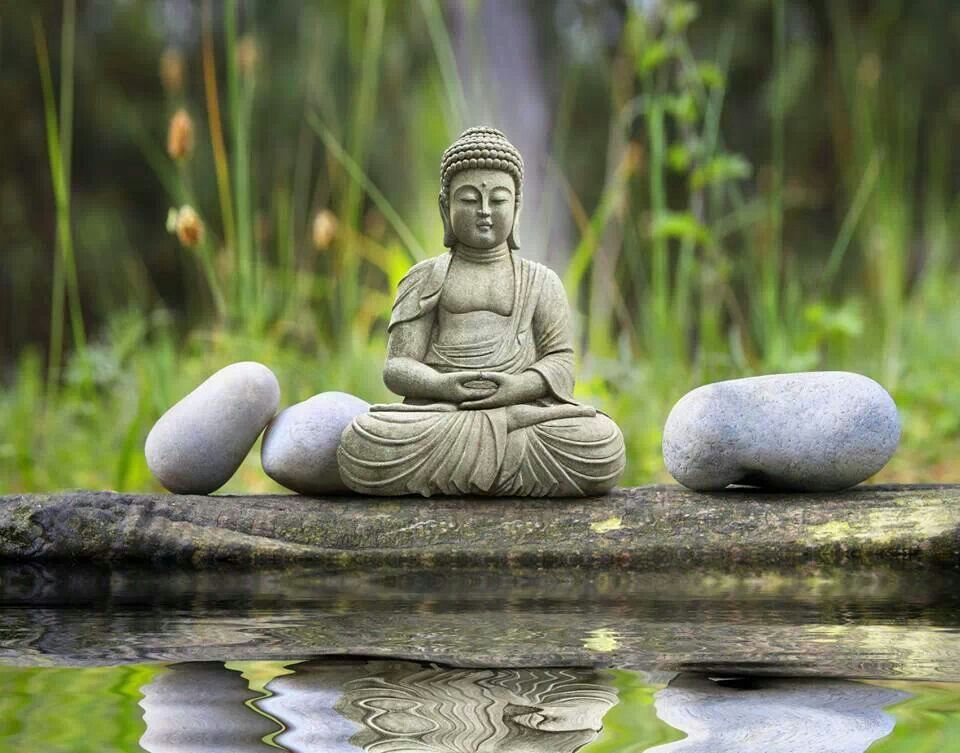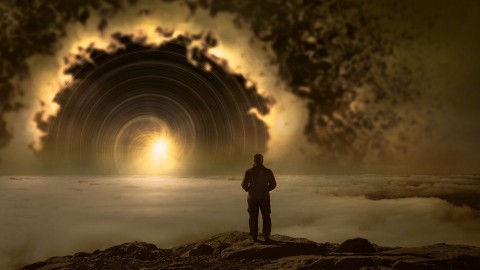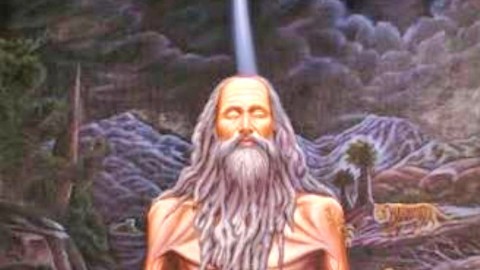Now we will enter into the sutras. They are very, very beautiful. Try to understand them. Deep is their significance. You will have to be very, very aware to understand the subtle nuances.
THESE SAMADHIS THAT RESULT FROM MEDITATION ON AN OBJECT ARE SAMADHIS WITH SEED, AND DO NOT GIVE FREEDOM FROM THE CYCLE OF REBIRTH.
THESE SAMADHIS THAT RESULT FROM MEDITATION ON AN OBJECT… You can meditate on any object, whether material or sacred. The object may be money, or the object may be moksha, the final attainment. The object may be a stone or the object may be the kohinoor diamond; it makes no difference. If the object is there, the mind is there; with object, mind continues. Mind has a continuity through the object. Through the other, the mind is fed continuously. And when the other is there you cannot know yourself; the whole mind is focused on the other. The other has to be removed, utterly removed, so there is nothing for you to think, there is nothing for you to give your attention to, there is nowhere you can move.
With the object, Patanjali says there are many possibilities: you can be in relationship with the object as a reasoning being; you can think about the object logically – then Patanjali gives it the name of savitarka samadhi. It happens many times: when a scientist is observing an object he becomes completely silent; no thoughts move in the sky, in his being, he is so much absorbed with the object. Or sometimes a child playing with his toy is so absorbed that the mind has completely, almost completely, stopped. A very deep serenity exists. The object takes all your attention; nothing is left behind. No anxiety is possible, no tension is possible, no anguish is possible, because you are totally absorbed in the object, you have moved in the object.
A scientist, a great philosopher… It happened to Socrates: he was standing one night; it was a full moon night and he was looking at the moon, and he became so absorbed… He must have been in what Patanjali calls savitarka samadhi, because he was one of the most logical men ever born, one of the most rational minds, the very peak of rationality. He was thinking about the moon, about the stars and the night and the sky, and he forgot himself completely. And the snow started falling, and by the morning he was found almost dead, half his body covered with snow, frozen, and still he was looking at the sky. He was alive but frozen. People came to search where he had gone, and then they found him standing; the whole night he was standing under the tree. And when they asked, “Why didn’t you come home back? – And the snow is falling and one can die,” he said, “I completely forgot about it. For me, it has not fallen. For me, time has not passed. I was so much absorbed with the beauty of the night, and the stars and the order of existence and the cosmos.”
Logic always is absorbed with the order, with the harmony that exists in the universe. Logic moves around an object – goes on moving around and around and around – and the whole energy is taken by the object. This is samadhi with reason, savitarka, but the object is there. The scientific, the rational, the philosophical mind attains to it.
Then Patanjali says that there is another samadhi, nirvitarka, the aesthetic mind – the poet, the painter, the musician attains to it. The poet goes directly into the object, not around and around, but still the object is there. He may not be thinking about it, but his attention is focused on it. It may not be the head functioning, it may be the heart, but still the object is there, the other is there. A poet can attain to very deep, blissful states, but the cycle of rebirth will not stop, neither for the scientist nor for the poet.
Then, Patanjali comes to savichara samadhi: logic has been dropped, just pure contemplation – not about it – just looking at it, watching at it, witnessing it. Deeper realms open but the object remains there, and you remain obsessed with the object. You are yet not in your own self – the other is there. Then Patanjali comes to nirvichara.
In nirvichara, by and by, the object is made subtle. This is the most important point to be understood: in nirvichara, the object is made more and more subtle. From gross objects you move to subtle objects – from a rock to the flower, from the flower to the fragrance. You move towards subtle. By and by, a moment comes the object becomes so subtle, almost as if it is not.
For example if you contemplate on emptiness; the object is almost not, if you meditate on nothingness. There are Buddhist schools which emphasize only one meditation, and that is on nothingness. One has to think, one has to meditate, one has to imbibe the idea that nothing exists. Continuously meditating on nothingness, a moment comes when the object becomes so subtle that it cannot withhold your attention; it is so subtle that there is nothing to contemplate, and one goes on and on and on. Suddenly, one day the consciousness bounces upon oneself. Not finding any standing ground there in the object, not finding any foothold, not finding anything to cling to, the consciousness bounces upon itself. It returns, comes back to its own center. Then it becomes the highest, the purest, nirvichara.
The highest, nirvichara, is when the consciousness bounces upon oneself. If you start thinking that, “I have attained to no-thought, and I have attained to nothingness,” again you have created an object and the consciousness has moved away. This happens many times for a seeker. Not knowing the inner mysteries, many times you bounce upon yourself. Sometimes you touch your center, and again you have gone out. Suddenly, the idea arises, “Yes, I have attained.” Suddenly, you start feeling, “Yes, here it is. satori has happened, samadhi has been attained.” You feel so blissful it is natural for the idea to arise. But if the idea arises, again you have become a victim of something which is objective. Subjectivity is lost again; oneness has become two. Duality again is there.
One has to be aware not to allow the idea of no-thought. Don’t try – whenever something like this happens, remain into it. Don’t try to think about it, don’t make any notion about it; enjoy it. You can dance, there will be no trouble, but don’t allow verbalization, don’t allow language. Dancing won’t disturb because in dancing you remain one.
In Sufi tradition, dance is used to avoid the mind. In the last stage, Sufi Masters say that, “Whenever you come to a point where an object has disappeared, immediately start dancing so that the energy moves into the body and not in the mind. Immediately do something; anything will help.”
Zen Masters when they attain start laughing a real belly laugh, roar-like, a lion’s roar. What are they doing? Energy is there and for the first time energy has become one. If you allow anything else in the mind, immediately the division is again there, and division is your old habit. It will persist for a few days. Jump, run, dance, give a good belly laugh, do something so that the energy moves into the body and not into the head. Because energy is there and the old pattern is there, it can move again…
Many people go to Osho, and whenever it happens, the greatest problem arises – the greatest Osho says, because it is no ordinary problem. The mind immediately grabs hold of it and says, “Yes, you have attained.” The ego has entered, the mind has entered, everything is lost. A single idea and a vast division immediately is there. Dancing is good. You can dance – there will be no trouble about it. You can be ecstatic, you can celebrate. Hence Osho emphasizes on celebration.
After each meditation, celebrate, so celebration becomes part of you, and when the final happens, immediately you will be able to celebrate.
THESE SAMADHIS THAT RESULT FROM MEDITATION ON AN OBJECT ARE SAMADHIS WITH SEED, AND DO NOT GIVE FREEDOM FROM THE CYCLE OF REBIRTH.
The whole problem is how to be freed from the other, the object. The object is the whole world. You will come again and again if the object is there, because with the object exists desire, with the object exists thought, with the object exists ego, with the object you exist. If the object falls, you will suddenly fall, because object and subject can exist together. They are parts of each other; one cannot exist. It is just like a coin: the head and tail exist together. You cannot save one and throw the other. You cannot save the head and throw the tail – they are together. Either you keep them both or you throw them both. If you throw one, the other is thrown. Subject and object are together; they are one, aspects of one thing. Object drops, the whole house of subjectivity immediately collapses; then you are no more the old. Then you are the beyond, and only the beyond is beyond life and death.
You will have to die, you will have to be reborn. While dying, just like a tree, you gather all your desires again in a seed. You don’t go into another birth; the seed flies and goes into another birth. All you have lived desired – your frustrations, your failures, your successes, your loves, your hates – while you are dying, the whole energy gathers into a seed. That seed is of energy; that seed jumps from you, moves into a womb. Again that seed recreates you, just like a seed in the tree. When the tree is going to die, it preserves itself into the seed. Through the seeds the tree persists; through the seed you persist. That’s why Patanjali calls it sabeej samadhi. If the object is there, you will have to be born again and again, you will have to pass through the same misery, the same hell that is life, unless you become seedless.
And what is seedlessness? If the object is not there, there is no seed. Then all your past karmas simply disappear, because in fact you have never done anything. Everything has been done by the mind – but you are identified, you think you are the mind. Everything has been done by the body – but you are identified, you think you are the body.
In a seedless samadhi, in nirvichara samadhi, when only consciousness exists in its utter purity, for the first time you understand the whole thing: that you have never been the doer. You have never desired a single thing. There is no need to desire because everything is in you. You are the ultimate. It was foolish on your part to desire, and because you desired you became a beggar.
Ordinarily you think otherwise – you think because you are a beggar, that’s why you desire. But in seedless samadhi dawns this understanding: that it is just the otherwise – because you desire, you are a beggar. You are completely upside down. If desire disappears, you simply suddenly become the emperor. The beggar has never been there. It was because you were desiring, it was because you were thinking too much of the object, and you were so much obsessed with the object and the objects, that you had no time and no opportunity and no space to look within. You have completely forgotten; that who is within. Within is the divine, within is God himself.
That’s why Hindus go on saying, “Aham brahmasmi.” They say, “I am the ultimate.” But just by saying, it cannot be attained. One has to reach; to the nirvichara samadhi. Only then Upanishads become true, only then Buddhas become true. You become a witness. You say, “Yes, they are right,” because now it has become your own experience.
Tags: Patanjali Yoga Sutra 14.1 Savitarka To Nirvichara Samadhi










